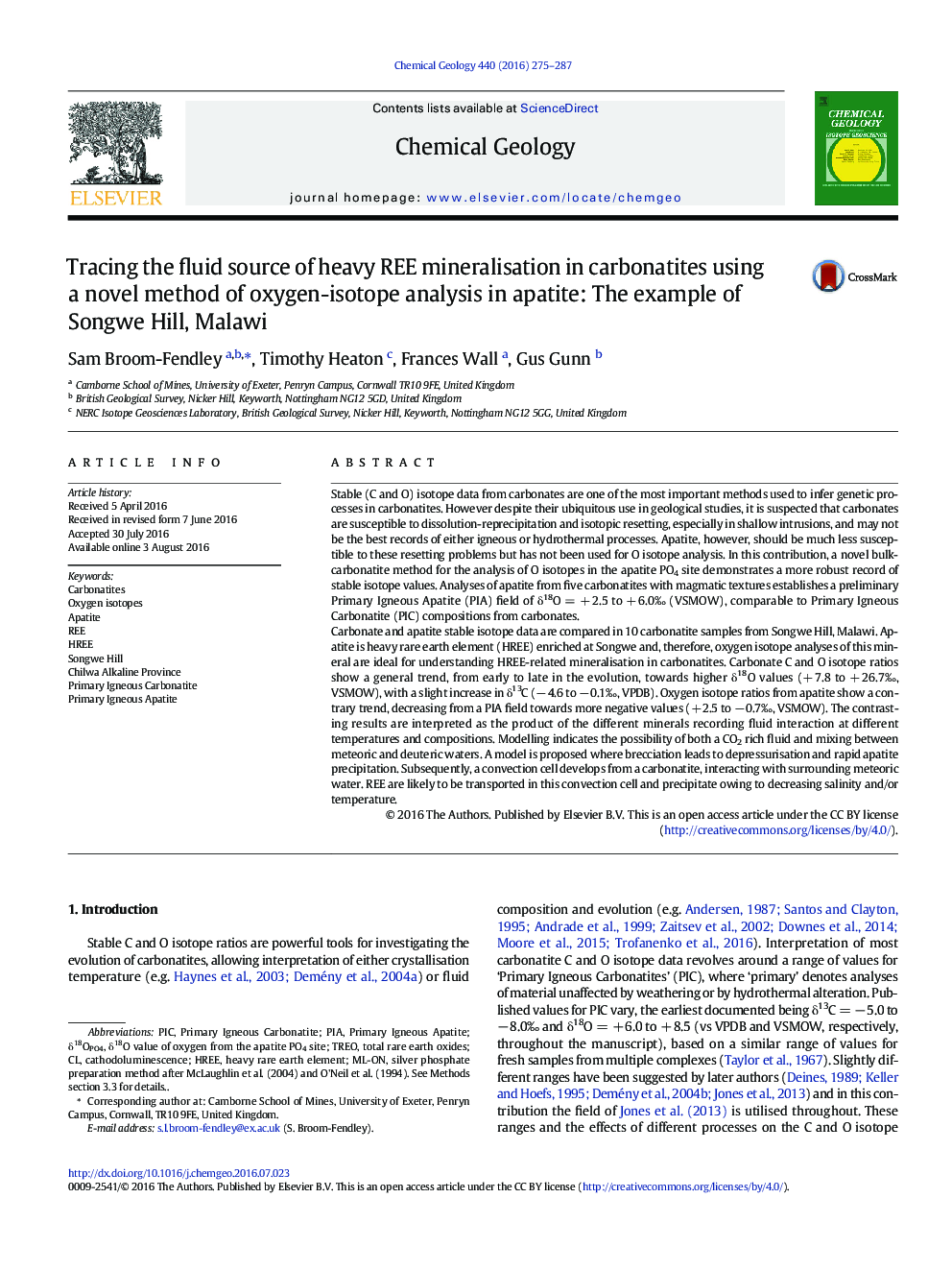| کد مقاله | کد نشریه | سال انتشار | مقاله انگلیسی | نسخه تمام متن |
|---|---|---|---|---|
| 6436043 | 1637534 | 2016 | 13 صفحه PDF | دانلود رایگان |

- New method analysing O-isotopes in carbonatite apatite, with an igneous apatite field proposed between + 2.5 and + 6.0Ⱐδ18O
- HREE-bearing apatite and carbonate δ18O values are compared from Songwe Hill
- Apatite and carbonate crystallise at different stages of the carbonatite evolution and are in isotopic disequilibrium
- Diverging apatite and carbonate δ18O values are suggested to reflect the fluid composition at differing crystallisation times
- HREE mineralisation caused by early apatite crystallisation; carbonate forms later and has higher δ18O due to reprecipitation
Stable (C and O) isotope data from carbonates are one of the most important methods used to infer genetic processes in carbonatites. However despite their ubiquitous use in geological studies, it is suspected that carbonates are susceptible to dissolution-reprecipitation and isotopic resetting, especially in shallow intrusions, and may not be the best records of either igneous or hydrothermal processes. Apatite, however, should be much less susceptible to these resetting problems but has not been used for O isotope analysis. In this contribution, a novel bulk-carbonatite method for the analysis of O isotopes in the apatite PO4 site demonstrates a more robust record of stable isotope values. Analyses of apatite from five carbonatites with magmatic textures establishes a preliminary Primary Igneous Apatite (PIA) field of δ18O = + 2.5 to + 6.0â° (VSMOW), comparable to Primary Igneous Carbonatite (PIC) compositions from carbonates.Carbonate and apatite stable isotope data are compared in 10 carbonatite samples from Songwe Hill, Malawi. Apatite is heavy rare earth element (HREE) enriched at Songwe and, therefore, oxygen isotope analyses of this mineral are ideal for understanding HREE-related mineralisation in carbonatites. Carbonate C and O isotope ratios show a general trend, from early to late in the evolution, towards higher δ18O values (+ 7.8 to + 26.7â°, VSMOW), with a slight increase in δ13C (â 4.6 to â 0.1â°, VPDB). Oxygen isotope ratios from apatite show a contrary trend, decreasing from a PIA field towards more negative values (+ 2.5 to â 0.7â°, VSMOW). The contrasting results are interpreted as the product of the different minerals recording fluid interaction at different temperatures and compositions. Modelling indicates the possibility of both a CO2 rich fluid and mixing between meteoric and deuteric waters. A model is proposed where brecciation leads to depressurisation and rapid apatite precipitation. Subsequently, a convection cell develops from a carbonatite, interacting with surrounding meteoric water. REE are likely to be transported in this convection cell and precipitate owing to decreasing salinity and/or temperature.
Journal: Chemical Geology - Volume 440, 15 November 2016, Pages 275-287